#Star Trek: Prodigy Creators and Director Discuss the Heart of Trek

“#Star Trek: Prodigy Creators and Director Discuss the Heart of Trek”
On October 28, Paramount+, in partnership with Nickelodeon, will launch Star Trek: Prodigy, the first Trek series created specifically for a target audience of young people.
This is a show that comes to the table with an exceptional pedigree in creativity. Creators Dan and Kevin Hageman are a powerhouse brother duo with writing credentials for long-running popular animated series such as Netflix’s Trollhunters: Tales of Arcadia and Ninjago: Masters of Spinjitzu.
At New York Comic-Con, they were joined by director Ben Hibon who brings experience in animation direction and design to the team. Together, the team spoke virtually with a roundtable of press members about the inspiration and aspirations of their fledgling series.
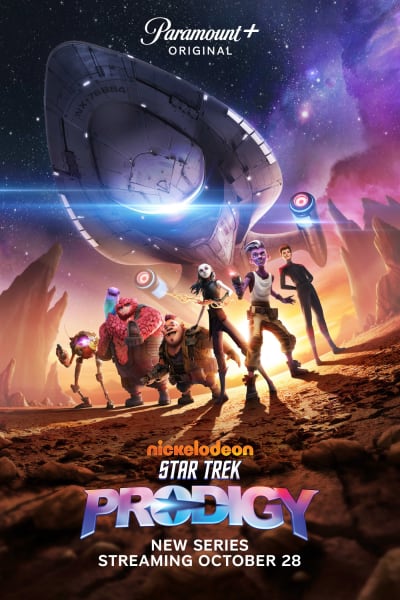
Not a children’s show but also not in the vein of juvenile-yet-adult cartoons like Bojack Horseman and South Park, Star Trek: Prodigy harkens back to the epic adventure animated series like The Pirates of Dark Water and — dare we mention it? — Dungeons and Dragons.
The premiere introduces audiences to its young heroes, Dal (Brett Gray), Rok-Tahk (Rylee Alazraqui), and Gwyn (Ella Purnell). Along with a motley crew of aliens, they escape Gwyn’s father, The Diviner, and his hench-bot, Drednok (Jimmi Simpson), aboard a Federation starship, Protostar.
A key element to The Diviner’s grip over his prison mining colony on Tars Lamora is a ban on translators, which effectively isolates the prisoners by preventing communication and making it impossible for prisoners to organize or unify.
Dan and Kevin tie this Tower of Babel device to their thoughts on how they envisioned Tars Lamora as the antithesis of the Federation.
Dan explains, “You look at what the Federation and Starfleet is. It’s an alliance where we are understanding diverse species. And we wanted to take them as far away from that as possible.
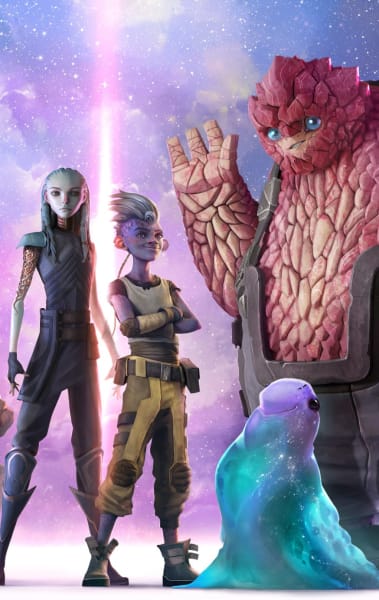
“This crew, they don’t even know each other. Even though they’re going to get to know each other on the bridge, they’re not even so-called friends in this Tower of Babel landscape.
“We just love that the first time you hear Rok’s voice, you’re like, ‘oh my god.’ You just care. You want to see these people get to know each other.
“That’s at the heart of Star Trek. It’s like Kirk and Spock coming together and becoming one. Working together. That’s the thing that really inspired us.”
Kevin adds, “On top of lack of communication, what also is the opposite of Starfleet? Very clearly, The Diviner says, ‘Hope has no purpose here.’ Where do we start these kids? They’ve got nothing. It’s going to make Starfleet even more glorious and bright and beautiful for them.”

Both Hagemans acknowledge that communication is the essential element for their crew. “When we looked at this first season, the word that resonates is communication. It’s a big theme. A big spine.”
With Star Trek: Prodigy situated in the Delta Quadrant, a largely unmapped and unknown part of the Trek universe, the show has free rein to introduce new worlds and species.
Dan feels there’s a tension between innovation and familiarity.
“You want to have new territory, and you also want to have the old classics. I think that’s what we’re trying to do with the show is we don’t want to just solely rely on giving you exactly what you expect.
“Every journey, every Trek is different. We want to have that balance of finding new species, but, at the same time, finding species that we all know.”

Kevin expands, “There’s a fun spin on our kids meeting Klingons, meeting the Borg, traveling through a tachyon storm. These are all these fun, classic. It’s nostalgic, right?
“I want this nostalgia that these characters are going to go into, and it’s going to be introducing our new audience to all those great pillars [of] Trek lore.
With Star Trek: Prodigy targeting a younger audience, the creative team put effort into building multi-faceted characters to inhabit a rich and textured landscape.
Hibon, as director, had a vision of how this world-building would take shape.
“From my perspective, as a storyteller, we’re taking our time to set the stage, to examine how one’s feeling in a certain situation prior to going into space, prior to going into conflicts, prior to going into challenges.

“We’re taking the time to let the kids really connect with the characters and the scenarios that we establish. That time is very hard to get when you make a show like this.
“It’s really hard to sit on a shot. It’s really hard to spend all that [time] adding layers to all the personalities you might encounter and how they come together and [the] dynamics of the group before we start opening up to the rest of the adventure.
“Hopefully, the story does well for kids. It’s not telling them, ‘Oh, we need you to go really fast through it, so we don’t lose your attention.’ We want them to come with us and take the time to really understand all the facets and aspects of that story.”
Dan chimes in, “I would say kids like what adults like. You look at the books that we grew up on, like Shel Silverstein and even Dr. Seuss. These are amazing pieces of work.
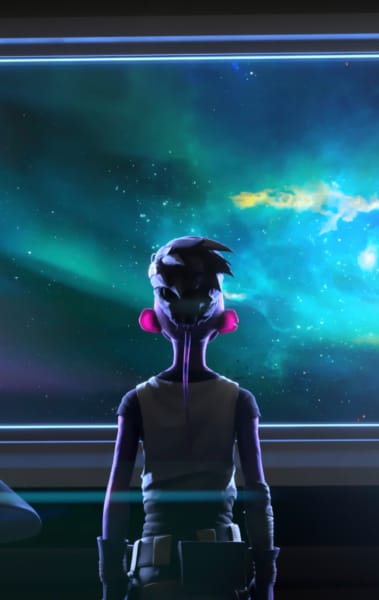
“Oftentimes, you can look at kids’ entertainment as just, ‘Give them some gags. Give them some whatever it is…’ We’re challenging kids because kids should be challenged.”
“You give them a character to connect to, and it’ll stick to their bones for their lives. I think that’s the hope. That’s our hope.”
Kevin’s point is quite simple. “That’s good storytelling. And I think what you guys will find in this show [is] you’re going to laugh, you’re going to be thrilled, and there are going to be really powerful moments that will make you cry. It’s made me cry many times.”
The core Trek message is one of inclusion and connection. Star Trek: Prodigy is no different, and yet, it’s unique.
Dan explains, “We love the found family kind of trope. In a lifetime, you go through different phases — your twenties, your first job, your first relationship — and you’re always having those moments where you’re learning about each other, and there are so many lessons within that.

“That’s always resonated in Star Trek. I guess ours is a little different because, in most Star Trek shows, these are crews who have been together for a long time, and you’re seeing them at their best.
“We want to see our crew at their best at some point, but we’re privy to seeing them at the very beginning.”
When asked about Star Trek’s long tradition of innovative and positive world-building, Hibon has a philosophical perspective.
“I feel like Trek has always been the story of many rather than the story of one. By taking that approach, it has such a wider appeal and way to connect with an audience.
“It never isolates. It never judges. And it always tries to include. In my opinion, that is one of the strengths. There are many, but that is one of them.”

Creating this show has meant piecing together the voice recordings of its widespread cast to bring to life a script that the artists then actualize in a visual medium.
Kevin lauds the work by Hibon and the creative team.
“When we record our artists, we just record them by themselves. They’re all working actors. They’re all around the world. And they’re literally recording from their closets. They’re sitting in their closet, recording, and they’re such amazing actors.
“We really went through a big casting process. We didn’t want just really distinctive cartoon voices. We wanted really dramatic actors who could bring the drama.
“I love that we get them recorded… most of the time, we have them recorded before we go to the animatic phase.
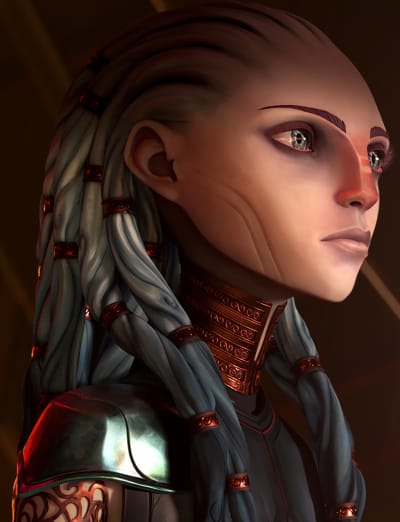
“So the artists, the board artists, are hearing that delivery and hearing the quiver in someone’s voice or the hitch when they have a hard time saying something.
“We didn’t write that in the script, but the actor brought it, and then the board artist can actually bring that out.
“My favorite shots in our show are when you have those extreme close-ups on a character’s face, and you see them breathe, or their eye naturally looks around a split second and then [focuses] back on what they’re listening to. It just brings them to life.”
Dan agrees with the magic of bringing these characters to life. “It makes the world feel real, and it makes you care for these characters even more because you feel like they’re really out there.”
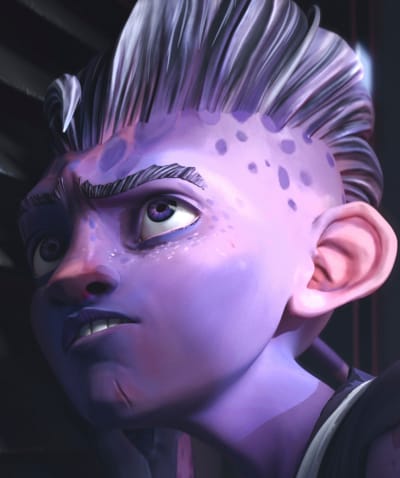
Star Trek: Prodigy premieres on Paramount+ on October 28 with an hour-long episode.
TV Fanatic will be reviewing each new episode as it drops weekly. Be sure to drop in with your thoughts on the Protostar’s adventures, the crew’s evolution, and how The Diviner’s plan unfolds.
In the meantime, ICYMI, check out our other NYCC roundtable interviews with Kate Mulgrew and with Brett Gray, Rylee Alazraqui, and Ella Purnell.
Are you excited for this new foray into the Trek-verse? Let us know in the comments your hopes for the crew of the Protostar!
Diana Keng is a staff writer for TV Fanatic. Follow her on Twitter.
For forums sites go to Forum.BuradaBiliyorum.Com
If you want to read more Like this articles, you can visit our Social Media category.




